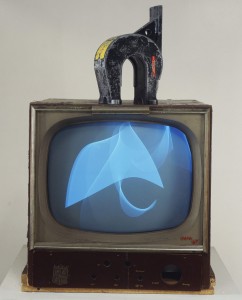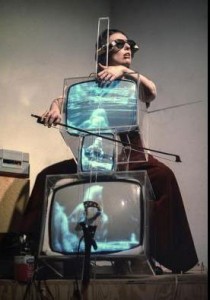Blog
The short history of Video Art
The video as an art form was born in the early 60s and is the result of the meeting of artists, engineers and TV directors seeking new medium of video usage possibilities. In 1959, the American avant-garde artist George Brecht realized a draft of an installation, an assembly of nine television stations would today be called a video wall.
One of the founding artists of this art is a South Korean artist Nam June Paik. He is considered the first artist of the video art movement. In 1962, he was invited by the experimental music studio of the WDR in Cologne, where he began an experiment between CRT TVs and a magnet. Between art and technology, video art was born.
It was in 1963 that Nam June Paik exhibited his first experiences on images in a gallery. He puts on the floor thirteen televisions prepared for the distortion of images. He managed to create the distortions of colorful images as well as Nixon’s image distortions. This exhibition is worthy of the contemporary art movement Fluxus.

In 1965, Nam June Paik got a grant from the Rockefeller Foundation, enabling him to buy one of the first Portapack Sony launched on the US market (first portable camera that can shoot a person outside a studio).
In 1966, Les Levine, one of the first artists to use the Portapack with Nam June Paik, made the first video: Bum.
The seventies marked the gradual implementation of the video, both in its artistic dimension and sociological dimension. It became a tool of information and communication among individuals and groups of individuals: it was the first experience of local distribution networks.
In 1977, Denmark saw the birth of the first two and most important workshops: Danish Video Workshop and the Danish Film Workshop, both financed by the Danish Film Institute. They put the material available to people / artists who want to express themselves through film and video.
n 1979 it was the creation of the video department at the National Museum of Modern Art at the Pompidou Centre in Paris.
In the early 80s, the development of the VHS standard and improvements in the color system allowed a cheaper production and better technical quality. The possibilities of electronic processing of images recorded by the camera are experiencing enormous progress.

The second half of the 90s marked the appearance on the Internet of French videographers artists websites , visual artists and multimedia. The World Wide Web became the new media, home ground for existing works. It became a medium for creating works.
The border between video art and film is thin but fundamental, indeed video art is a product of television.
Today, with the proliferation of media (smartphone, tablet, webcame, facebook, youtube), the viewers are now moving as well were the images are seen. 50 years old and art video has not aged.
Main art video artists from the 60’s to today:
Acconci Vito
Achour Boris
Averty Jean-Christophe
Davis Douglas
Graham Dan
Hatoum Mona
Hill Gary
Ikam Catherine
Jonas Joan
Kubota Shigeko
Lamunière Simon
Otth Jean
